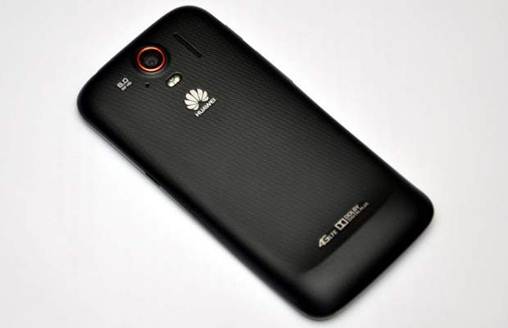Though not bad, but for $75, you can purchase comprehensively
LTE version of Samsung Galaxy S3.

Huawei Ascend P1
LTE
We were confused by Ascend P1 LTE of Huawei at the first
sight at Mobile World Congress 2012. We found the brand unfamiliar at then, but
we were very interested in this hi-end Android smartphone having 4G support. However,
despite the phone’s appeal (4G wasn’t introduced the market then), we continued
finding something more relevant for our audiences.
Now Huawei Ascend P1 LTE has arrived thanks to EE and the
new 4G network. However, its tech specs that impressed us in last March 2012 are
now a bit boring. Actually, the device runs Android 4.0 (Ice Cream Sandwich), which
was quite interesting then but becomes obsoleted now when the faster Android
4.1 (Jelly Bean) has been appearing in most models, including LTE (4G) version
of Samsung Galaxy S3.
The same problem is also true with the phone’s dual-core
1.5GHz processor and PowerVR SGX540 GPU. The SunSpider JavaScript score of
1896ms was not much exciting as the fastest phone was able to finish the test
in half of such time. In GLBenchmark 2.5.1 Egypt HD, it got a typical 27fps
rate.
The phone’s most striking feature lies in 4G support. In an
office at London, we recorded an average transfer rate of 20Mbit/s, 10 times as
fast as what we had via HSDPA via a 3G phone. In daily use, you can enjoy
movies and TV shows on train without any lagging.
The phone also looks nice, with rear removable panel
revealing mini-SIM and micro-SD slots. You will surely need the latter as the
phone has only 4GB storage (half of which is available at the first time
unboxing). Luckily, adding an additional micro-SD 32GB card just costs $19.5. Despite
the removable rear panel, the phone feels sturdy, without any squeaking sound
or swollen edge. It is not sleek but we had no complaint about the 133x65x9.9mm
size and 135g weight. Samsung Galaxy S3 is not much weightier or larger though
its screen size is bigger.
Ascend P1 LTE owns 4.3in Super AMOLED display featuring
960x540p resolution. This is surely the most popular screen among mid-segment
models because it appears in both HTC One S and Motorola Razr and other phones.
It provides a lot of contrast though Pentile layout of sub-pixels makes it look
not as sharp as what the resolution can show. 3 common shortcut keys are
provided in form of touch-sensitive types below the screen, thus you will cost
any space for similar things on screen.
The AMOLED screen is very power-efficient, and as Ascend P1
LTE corporates one of these displays with a quite large-sized 1800mAh battery,
we weren’t surprised seeing that it got 7h 52min in video playback test.
In fact, Huawei didn’t make any change to Android OS, which
wasn’t bad at all in our opinions, as we like it in the way Google planned. Unfortunately,
there’s no plan for Android 4.1 (Jelly Bean) updates.
The 8MP camera took quite nice images in both low-lit and
bright conditions, but a close look shows lacks in details, in comparison with best
existing cameras. HDR mode helped to liven up greyish photos and well dealt
with dark/light contrast areas, but burst mode wasn’t much impressive. A click
captured 10 shots in sequence, but it was too fast to capture most of the
action. We loved to 5fps mode lasting such long.

The phone’s 8MP
camera
Actually, there’s nothing wrong with Huawei Ascend P1 LTE.
Design and screen are nice; camera and components are powerful, but they are
all unremarkable. If you are going to sign an expensive 4G contract, and this
device is not available in anywhere else, you’d better buy Galaxy S3 LTE
version.
|
Info
·
Website: www.ee.com
Technical
specs
·
OS: Android 4.0
·
Clock rate: 1.5GHz
·
Number of core: 2
·
RAM: 1GB
·
Mobile data: GPRS, EDGE, HSDPA, HSUPA, LTE
·
Display: 4.3in LCD, 960x540p resolution
·
Camera: 8MP
·
Internal storage: 4096MB
·
Card slot: micro-SD
·
Size/weight: 133x65x9.9mm/135g
·
Runtime: 7h 52min
Verdict
·
Though not bad, but for $75, you can purchase comprehensively
LTE version of Samsung Galaxy S3.
·
Ratings: 3/5
|